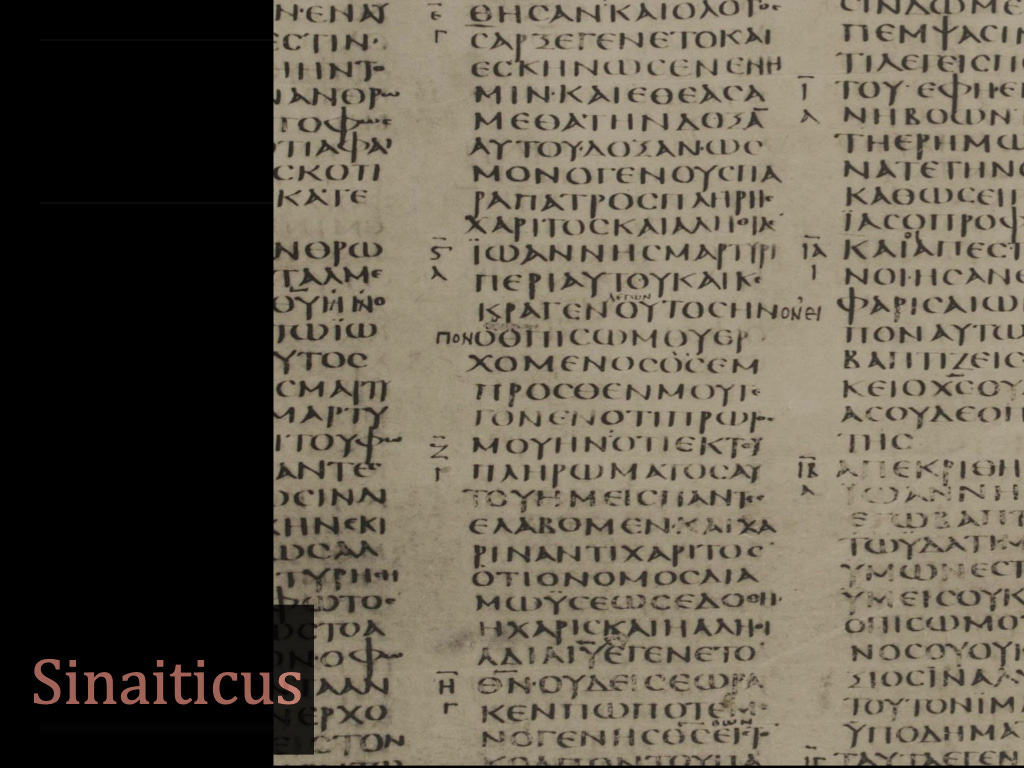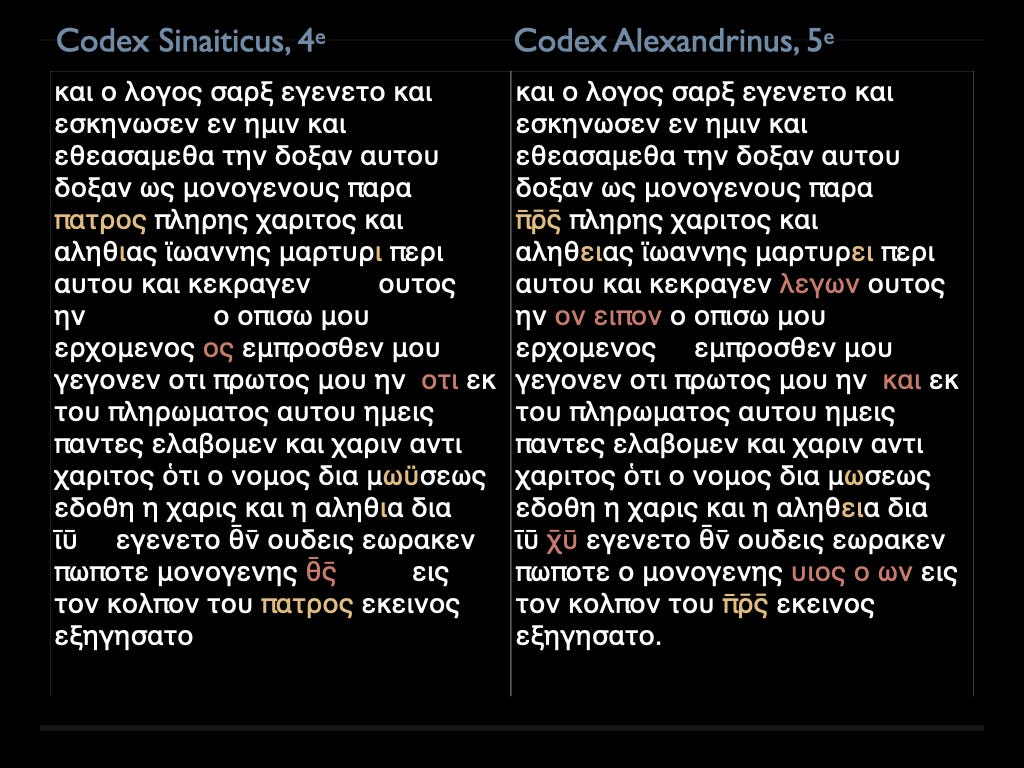Part of the presentation I'm preparing on the Bible is on the question of the reliability of the New Testament text. Whenever I do this, I’m always concerned about how to give, in a short space of time, a proper appreciation of what we have in the manuscript tradition of the New Testament. There are erroneous exaggerations on both sides, either to give the impression that the text is dubious in general, or to give the impression that the variants that do exist are of no importance. The idea that I hit on for this presentation is to give a concrete example by comparing two specific manuscripts over a few verses. Now I did want there to be one really important variant in the comparison, so I decided on John 1:14-18 in Sinaiticus (4th century) and Alexandrinus (5th).
Here’s the two manuscrits :
And here’s the comparison :
The differences in yellow are spelling differences. In Alexandrinus the word patros is in an abbreviated form while in Sinaiticus it’s spelled out. And in Sinaiticus Moses is spelled Moüsseos while the scribe for Alexandrinus spells it Mosseos.
The differences in red are actual differences at the level of the words, but as you can see in the translations below, the difference in sense for the majority of these variants is quite small.
Sinaiticus :
(15) John bears witness about him and cries out: this one is the one who comes after me. He has become ahead of me because he was (existed) before me.
(16) Because, from his fullness we have all received also grace in exchange for grace.
(17) Because the law was given through Moses. Grace and truth were through Jesus.
(18) No one has ever beheld God; the only-begotten God at the side of the Father, that one has revealed him.
Alexandrinus :
(15) John bears witness about him and cries out, saying: this one is the one which I said: the one who comes after me has become ahead of me because he was (existed) before me.
(16) And, from his fullness we have all received also grace in exchange for grace.
(17) Because the law was given through Moses. Grace and truth were through Jesus Christ.
(18) No one has ever beheld God; the only-begotten Son who is at the side of the Father, that one has revealed him.
I think this example is fairly representative of the manuscript tradition for the New Testament as a whole. There are a lot of variants (7 variants here between two manuscripts over 5 verses, not counting spelling), but quite rare is the variant that has a significant impact on the meaning of a passage. What’s more, for the vast majority of variants, it’s fairly clear which reading is original once we’ve taken into account all the manuscripts that we have (hundreds for each verse of the New Testament!).




